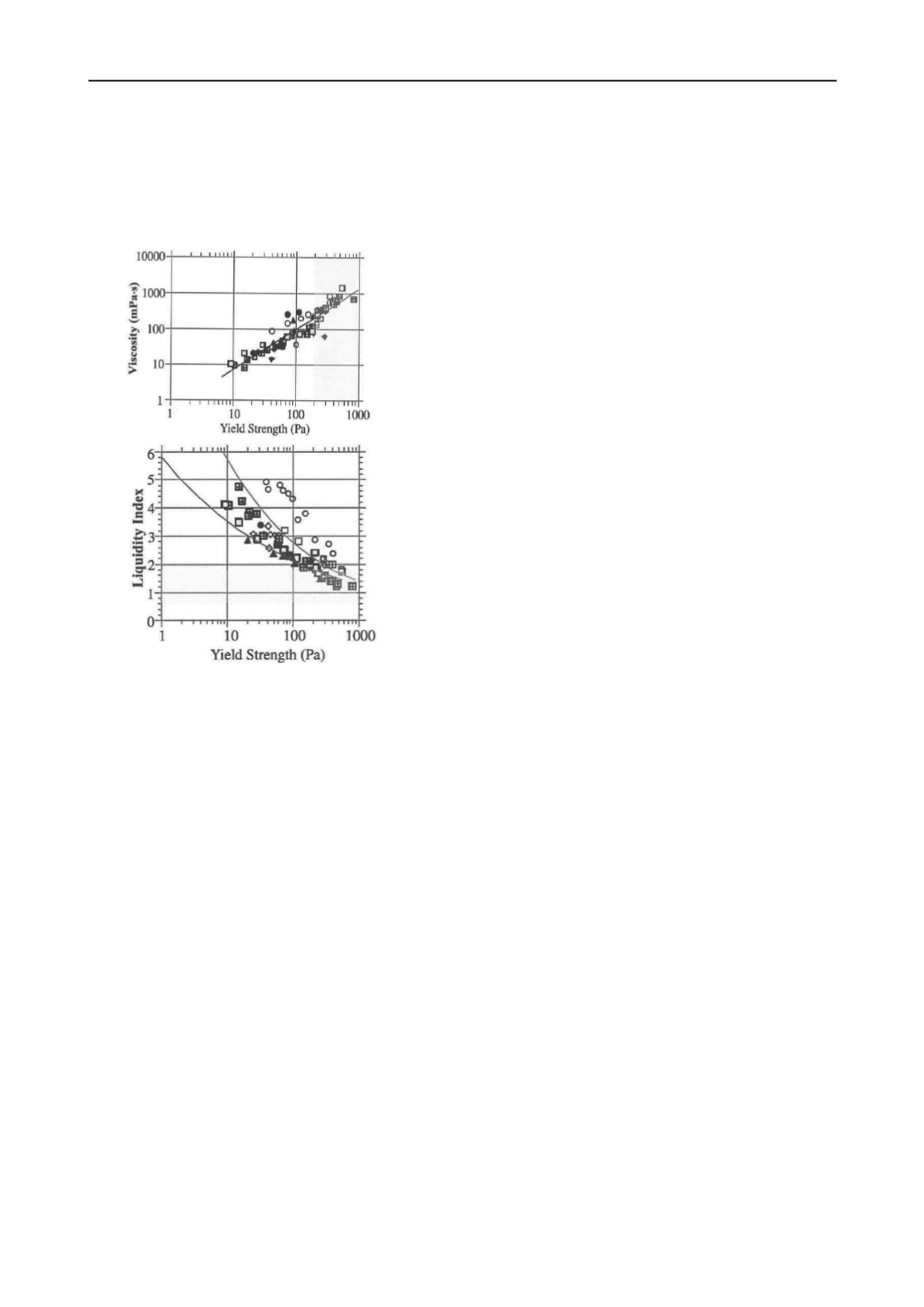
2220
Proceedings of the 18
th
International Conference on Soil Mechanics and Geotechnical Engineering, Paris 2013
soil viscosity (Imran and Parker, 2001& 2001). The Herschel-
Bulkley rheological model is used for the run-out distance
prediction. In the absence of laboratory test data, the yield
strength
y
of 1.5 kPa (30 psf) and reference strain rate
r
of 1/s
were adopted using published relationships as shown on Figure
8 based on soil liquidity index LI (Locat and Lee, 2002).
Figure 8. Relationship between yield strength, dynamic viscosity, and
soil liquidity index (Reproduced from Locat and Lee, 2002)
Considering debris flow originated at the bottom of the slope
and the flow origination mass length of around one-half of the
sliding mass length, the estimated run-out distance is around 25
m from the toe of the liquefied slope. These mobilized debris
flow mass may pose significant impact force against subsea
infrastructure in the flow path, even lead to loss of foundation
support.
4 CONCLUSIONS
Dynamic slope instability due to earthquake excitation and
subsequent submarine slides can cause mass gravity flow which
may cause significant impact force or the loss of foundation
support and thus pose great risk for the integrity of offshore
structure along the flow path.
This paper demonstrated the
ability of using a fully coupled nonlinear effective stress
analysis to simulate the development of liquefaction and the
instability of liquefied slope. The prediction of run-out distance
of subsequent debris flow was also discussed here.
For
practical application, it should be emphasized that the numerical
model for assessing the run-out distance should be tested and
calibrated with identified historic mass transport deposits
(MTD) and geomorphologic conditions along study site.
5 REFERENCES
American Petroleum Institute : Recommended practice for planning,
designing and constructing fixed offshore platforms
–
working stress
design, API RP 2A-WSD, twenty-first edition.2000.
International Organization for Standardizatin :
ISO
19902- Petroleum
and natural gas industries- fixed steel offshore structures, DIS version.
2004.
Imran J. and Parker J. 2001. BING, Subaqueous and subaerial finite
source debris flow model.
ITASCA Consulting Group Inc. (2012). FLAC- Fast Lagrangian
Analysis of Continua Dynamic Analysis.
Kuhlemeyer, R.L., and J.Lysmer. “Finite Element Method Accuracy for
Wave Propagation Problems,” J.Soil. Mech. & Foundations, Div.,
ASCE, 99 (SM5), 421-427, May 1973.
Kulhawy, F.H. and Mayne, P.H. 1990. Manual on estimating soil
properties for foundation design. Electric Power Research Institute,
EPRI.
Locat, J. and Lee H. 2002. Submarine landslides: advanced and
challenges, Canadian Geotechnical Journal, No. 39, 193-212.
Mejia, L.H. and Dawson, E.M. 2006. Earthquake Deconvolution for
FLAC. FLAC and numerical modeling in geomechanics Proceedings of
the 4
th
international FLAC symposium, Madrid, Spain.


